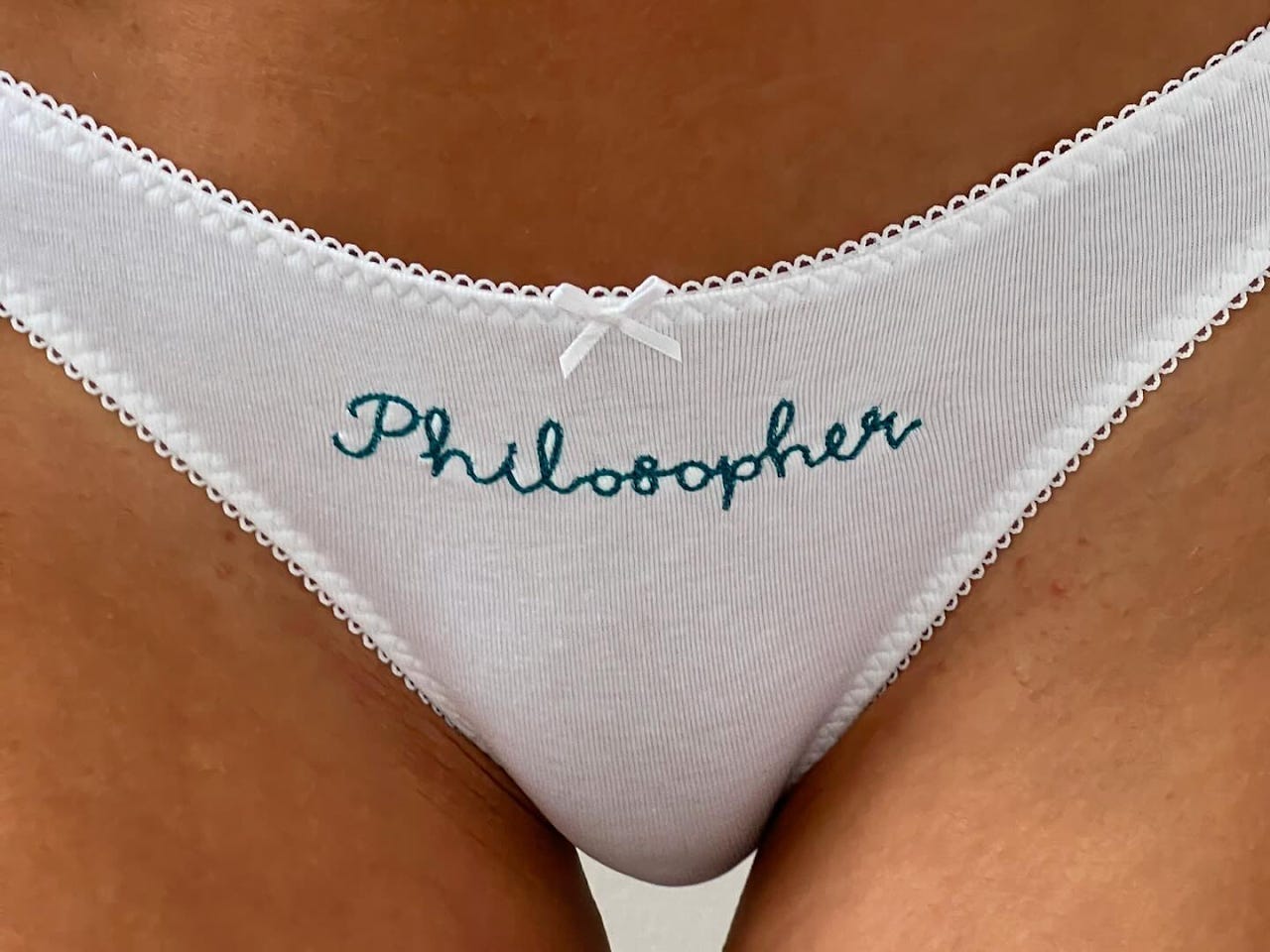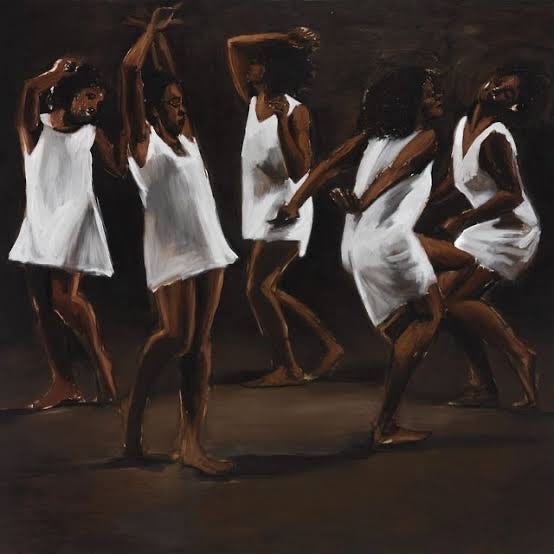Desire is a prelude.
Whatever happens next is in the hands of fate and algorithms. But in the moment of getting dressed, you briefly hold the pen. The advice that you should spray perfume wherever you would most like to be kissed speaks to getting ready as a kind of magic. An attempt to embody and pin down that hazey, impalpable feeling of wanting.
But the problem with trying to feel sexy is that you’re forever navigating the never-still waters between what you want, and what other people want. I’ve been thinking a lot about clothes recently: their strange power, their definite impact. The wrong shoes on the wrong day — delicate heels when all I want to do is run through the city; too-eager trainers when all I want to do is glide languorously down the street — make me feel disconnected and unwieldy.
It’s clear (we’ve all seen the Sabrina Carpenter discourse) that we don’t really know how to talk about sexiness. I’ve been trying to write this essay for months, and each time I find myself tangled up in questions like: Can you ever dress for yourself? What part do my own desires play in the clothes I wear? Am I driven entirely by things outside of my control? Do I even know the difference between my desires and my desirability?
It isn’t easy and it isn’t simple. But I’ve been steadying myself with this line in an old Frank O’Hara poem: “subways are only fun when you’re feeling sexy”. O’Hara makes clear what has become so obfuscated: that feeling is the starting point, that it’s supposed to be fun.
What could sexiness feel like?
i. like dancing all night
I’m sitting on the Metro in Paris, when the strap of a girl’s shiny plastic ballet flat snaps off her foot. A sharp noise, the dull finality of it: it’s not yet midnight, the music hasn’t even started, but it’s all over, she’s going home before the dancing begins. Later, at Free’P’Star in Le Marais, I brush my fingers against the rails and feel more polyester than usual between the silk and linen. Some pieces had the tags cut out, a warning sign I should have parsed right away: the sheer black blouse I bought made a crackling sound that evening when I pulled it over my head. A small betrayal: nylon masquerading as silk.
In an essay for Dirt, Ana Kinsella coined the term “flat fashion”. “Flat is a format that turns every outfit into content that can be consumed, every image into catalog,” Kinsella writes. Digital flatness is not interested in what it feels like — emotionally, physically — to wear clothes. Flat fashion is not made for our bodies to actually live in, only to be seen at the perfect angle.
This kind of clothing — plastic, flat — desensitises us. From the people who make our clothes. From the fibres which outlive us. From our own bodies. From our sense of style and taste. If it’s possible to “feel sexy” in a bodysuit from Shein, it’s not an experience I’m interested in chasing down.
But if we redefine sexiness as a feeling rather than an effect, we come closer to what it could mean to dress for your own desires. Audre Lorde writes that the erotic isn’t about what we do or look like, but about “how acutely and fully we can feel in the doing.”
When you centre your own pleasure in the clothes you wear, you will find yourself reaching for new fabrics and shapes. The satisfaction of eroticism, Lorde writes, can be found in any experience where the body “opens in response, hearkening to its deepest rhythms”.
In flat, plastic clothes, my body feels suffocated, immobile. Anaïs Nin said that it was important to “never lose sight of the whole.” An “impeccable dress,” she wrote “is made to be lived in, to be torn, wet, stained, crumpled.”
Back at Free’P’Star, I pick up a men’s cotton shirt for €5. The colour of sun-warmed tomatoes, it reminds me wine-stained summer evenings and, when I button it over my body, it brings out a new brightness in my eyes and cheeks. The fabric is strong: there’s a little wear in the cuffs, as if they’ve been buttoned and unbuttoned, pushed up and down arms, and a little fade in the colour, as if it’s been dipped in the sea and dried out in the sunshine many times over. I wonder who owned this shirt before me, and what stories they lived through when they wore it.
Later that weekend, I weave my own stories into the material, dancing in an underground bar with a girl who pulls me close by the shirt lapels, and kisses my neck where cotton meets skin. The next day, the collar bears a whisper of lipstick, but the fabric remains intact.
What could be sexier than clothing that’s made for living?
ii. like forgetting to care
“Fashion is about eventually becoming naked,” is something Vivienne Westwood used to say. In her work, she was always drawn to the way clothing moved and felt on the body — a strap falling from your shoulder, a skirt stroking your thighs as you walk.
One of my favourite silhouettes is an off-the-shoulder neckline. Ideally in chenille silk, cool like an evening dip in the ocean, skimming my skin as I laugh and tell jokes and dance. This is clothing which calls the body forward. It moves not against you, but with you. Roland Barthes thought that the most erotic thing you could wear was the gap between body and fabric:
“the intermittence of skin flashing between two articles of clothing (trousers and sweater), between two edges (the open-necked shirt, the glove and the sleeve); it is this flash itself which seduces,”
Playfulness, movement, slippage. Sexiness can never be static, just as it can never be flat. Westwood thought that fashion should be “life-enhancing”, something you could wear “without caring at all… augmenting body movements in some way, carrying them on after they have finished.”
Even erotic images require a sense of movement to have any effect. Compare the difference between the Modigliani girl above, her vest strap slipping, and the weird flash-on flatness of those American Apparel adverts in the 2010s. Who’s feeling sexier? Who’s having more fun?
I am forever pursuing that loose-limbed feeling. If you aren’t enjoying the experience of being in your body, if your clothes aren’t additive to having fun, then what’s the point of slipping into them?
iii. like being alive
My platonic ideal of a sexy outfit is literally anything Zoë Kravitz has ever slipped over her head, but especially this sky-blue Araks silk dress, which she wore on a date with Channing Tatum (R.I.P.) a few years ago. It’s not just the way the fabric dances on and with her body, but the clear joy she’s telegraphing, the ease with which she’s able to move.
People can taste euphoria from a distance. And the feeling imbues not just your clothes, but the world itself.
On one of London’s first warm days, I went for a walk in an oversized Hackney Saunas t-shirt, my bedraggled Adidas shorts, and no make-up. My hairdresser had taught me how to diffuse my hair, bringing out waves which had never before crested. I walked with happy, bouncing steps in my new trainers, Arlo Parks in my ears. My eyes kept getting caught on the tiny white petals blowing off the blossomed trees and swirling in the air. I could feel the washed-soft cotton of the t-shirt play against my skin, the gentle weight of my hair on my shoulders. I’d worn this exact outfit dozens of times — to yoga, to brunch, to lie in the park — but the energy inside me, around me, was new.
The sexiest I’d felt in a long time, and in the most Adam Sandler-chic outfit! Your wants and visions and dreams are interwoven into your clothes as you get dressed. The last song you listen to before you walk in, the smile you give yourself in the mirror, the joy looking down at your shoes give you, is as important — maybe even more important — than whatever you’re wearing.
iv. like saying yes to what you want
The reason I write about pursuing pleasure is that it’s so easy to lose touch with what you want. You’ll never have good sex if you don’t have a sexual relationship with yourself, and you’ll never feel sexy to someone if you don’t know what feeling sexy means to you.
Can you separate desire and desirability? We create these fixed categories, and we insist on division – the viewer and the viewed – but shouldn’t love and sex involve a kind of melting? The first definition in Roland Barthes’ A Lovers’ Discourse – a kind of fragmentary dictionary of desire – is “s’abîmer”, to be engulfed. “I am dissolved… I fall, I flow, I melt…” Barthes writes, “I lose my structure as a lover.”
I once dated a girl with the most incredible shoe collection. One night, we got drunk and spent hours on her bedroom floor, the contents of her wardrobe splayed across the bed. Being kissed in a dress and shoes that wasn’t mine, I felt the melting feeling Barthes writes about. My desire and hers, completely entwined.
Audre Lorde said that “we have been raised to fear the yes within ourselves”. What makes you want to say yes?











i feel that sensuality and eroticism is a dying art almost - subtleties replaced by performance. reading this made me wonder if the reason i feel most sexy when im intoxicated is not due to the act of being intoxicated itself, but the rhythm of carelessness about the way my hair falls, or how clothes plaster my body. this was a beautiful read.
Beautiful! I adored reading this!